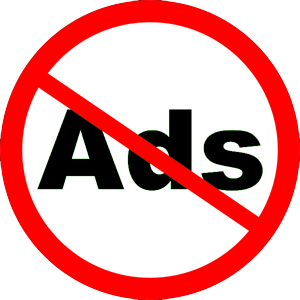 If your web browser has an ad blocker enabled you’ve probably noticed that many websites you want to visit now won’t let you view their content unless you disable the ad blocker.
If your web browser has an ad blocker enabled you’ve probably noticed that many websites you want to visit now won’t let you view their content unless you disable the ad blocker.
The reason they’ve adopted this policy? Because they depend on advertising revenue to fund their operations and earn a profit on their investments.
Ad blockers prevent advertisements from showing up in your web browser, and that results in zero ad revenue being earned from the page view.
Therefore, it seems like blocking visitors who use ad blockers would be a wise move, right?
Well, it really isn’t. Read on and I’ll explain why.
The terms of most website advertising deals are based on the site’s monthly page views. The more page views the site receives, the more advertisers are willing to pay to have their ads displayed on that site.
Blocking users from viewing a page because they’re using an ad blocker typically results in the user immediately hitting the back button to find another website to visit. That action directly results in two hits to the website’s future viability:
1 – The website’s bounce rate is increased.
2 – That visitor will likely never visit that website again, and even if they do return they’ll just be blocked again, resulting in yet another “bounce” that will increase the site’s bounce rate even more.
If you’re wondering why a high bounce rate negatively impacts a website’s future viability, it’s because Google and other search engines assume that a website with a high bounce rate probably has low quality content.
As a result the website suffers a hit to its search engine rankings because the search engines always want to recommend the best content possible for a given search term.
If a lot of people visit a site and then immediately leave it without reading the content, that’s a possible sign of poor quality content.
Of course the content on the page could actually be the best content available for the search term the user searched for, but that makes no difference to the search engines. All they know is a lot of visitors are bouncing back from the site without consuming the content they recommended to them via their search results.
It all boils down to this:
- A high bounce rates result in lower search engine rankings for the website.
- Lower search engine rankings result in fewer visitors to the site, hence fewer page views.
- Fewer page views result in less value to potential advertisers, which in turn results in less advertising revenue for the website.
As you can see, blocking visitors who use ad blockers can easily set in motion a vicious cycle that doesn’t end well for the owners of the websites.
Some websites have already stopped simply blocking visitors with ad blockers (which effectively tells the the visitors to “go away”), choosing instead to politely ask them to support the site by disabling their ad blocker while they’re using the site.
That’s a reasonable approach in my opinion.
I see nothing wrong with politely asking visitors to temporarily disable their ad blockers to help support the website, but then allowing them to consume the content on the page anyway should they choose to decline.
That would at least keep the site’s page views high and bounce rate low, resulting in the most search traffic possible. And the more search traffic the better since it results in more ad revenue overall.
Bottom line: Websites that block visitors who use an ad blocker are doing themselves a huge disservice. They would be much better off simply allowing the visitor to read the article or view the video instead of telling them to “go away”.
Bonus tip #1: Both publishers and advertisers hate ad blockers, for obvious reasons. The thing is, they have only themselves to blame for the recent explosion in the use of those ad blockers. Read this to find out why.
Bonus tip #2: Want to make sure you never miss one of my tips? Click here to join my Rick’s Tech Tips Facebook Group!
If you found this post useful, would you mind helping me out by sharing it? Just click one of the handy social media sharing buttons below.